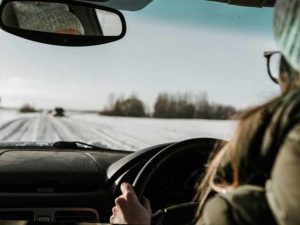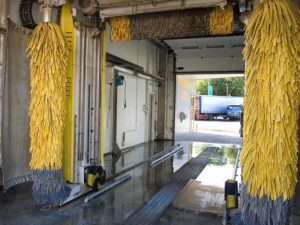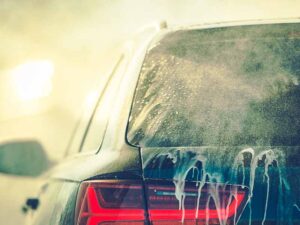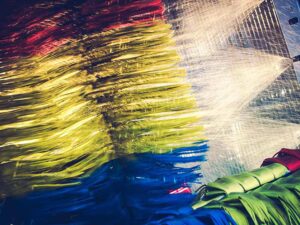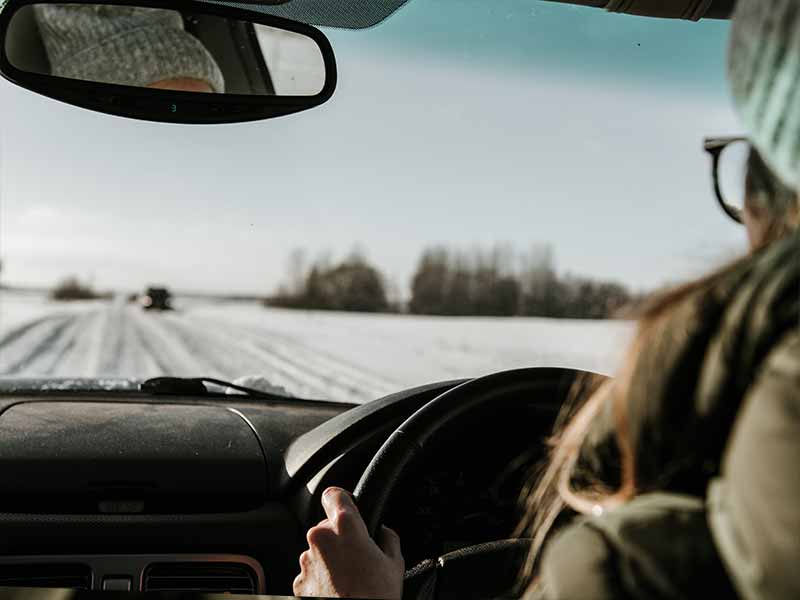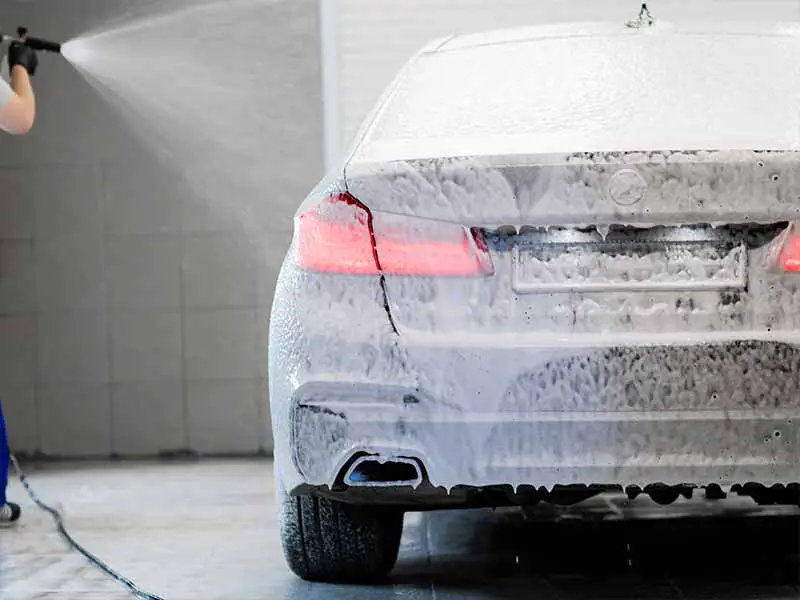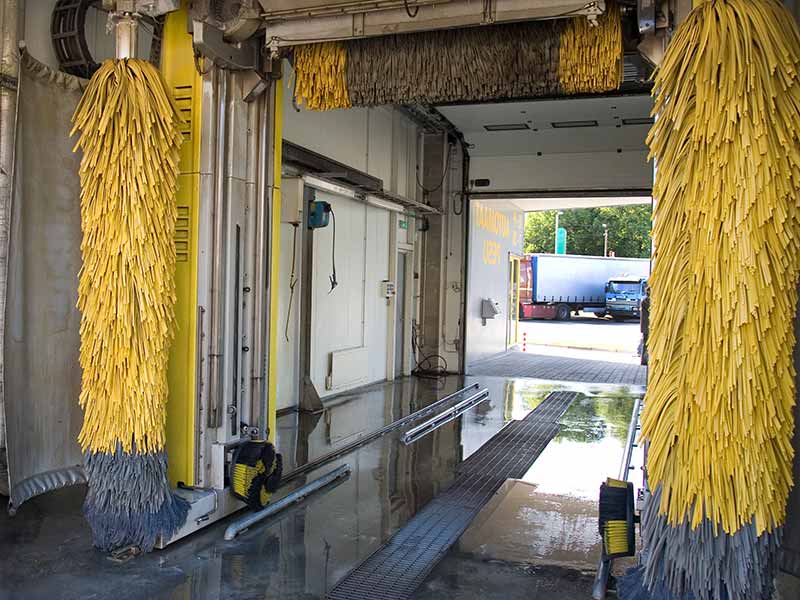Table of Contents
- Will a car in the rain get clean?
- Does rain damage car paint?
- Will the rain remove my car wax?
- Should you dry your car after it rains?
- How do you keep water spots off your car when it rains?
- Is it bad to wash your car before it rains?
- Rain After Car Wash?
- What do car washes do when it rains?
- Does rain wash away salt?
- How often should cars be washed?
- Helpful Links
- Conclusion: Is it OK to wash your car in the rain?
It’s not the best idea to wash your car in the rain. Rainwater is particularly dirty as far as water goes. There’s a lot of contaminants in the air that rain collects as it falls through the atmosphere. These contaminants could cause fine swirls and scratches as you wash your car or truck. Also, if not rinsed and dried thoroughly, acidic pollutants in rainwater can etch your clear coat and break down plastics and rubber seals. Ideally, you would wash your car after a rainstorm and not during or before.
If your vehicle is unusually filthy and the time you allotted for washing your car or truck is in the middle of a rainstorm, you could still go for it. Just know that you should rinse your car off after the rain stops and dry it well. This will prevent the harsh pollutants collected from the air by rain from remaining on your finish and baking in the sun.
Will a car in the rain get clean?
No. rain will make your car dirtier from the contaminates that it gathers in the air. Also, when rain hits the ground, it combines with dirt and grit from the ground (also known as mud) that then splashes up onto your car or truck.
The only exception to this might be if you had gone off-roading in your truck or Jeep and it was caked with mud. In this case, then yeah, it’s going to clean it off some. It won’t be as clean as a proper wash, but it’ll be less dirty than before.
Don’t rely on rainstorms to wash your car for you. They’ll actually make your car or truck dirtier and leave behind harmful acidic pollutants on the finish that will break down the clear coat. Keep your vehicle clean and ensure that a protective coating of wax, paint sealant, ceramic coating, or paint protection film keeps contaminants from rainwater from etching into the finish over time.
Does rain damage car paint?
Rainwater on plastic, rubber and your clearcoat can cause serious problems. This is due to acid rain, formed by compounds of sulfur dioxide and nitrogen oxides being released into the air. These compounds rise high in the atmosphere from smokestacks, cars, and trucks. They then mix with hydrogen and oxygen, the building blocks of water, and form acidic compounds.
When acid rain water falls on the vehicle, the water will evaporate, but the acidic pollutants get left behind. The contaminants left behind will etch into unprotected surfaces and begin to break them down over time. Whether your car is newly painted or has faded paint that’s spent decades in the sun, not protecting your finish from damaging acid rain will only cause damage, not help.
The closer you live to large cities, the more likely you’ll suffer from harmful pollutants in your local rainwater. This doesn’t mean that living in a more rural area is free from the potential damage from acid rain. It is still definitely a problem there too. You will likely just suffer the consequences less than those of us in the cities.
Paint protection products are more important than ever. Wax, paint sealants, ceramic coatings, and paint protection films will all provide a sacrificial barrier between your finish and the caustic pollutants in the atmosphere that rain deposits on your vehicle. Be sure to keep your car or truck protected and rinse it after a rainstorm for best results.
Will the rain remove my car wax?
Yes, it will, but only just a little. A good coat of wax can help protect the car’s paint from the harmful effects of rainwater by acting as a barrier. Wax is hydrophobic, which repels the water and causes it to bead up, allowing it to roll off the surface. But natural carnauba wax isn’t very durable, and the rain will take a little wax away with it. A good coat of old-fashioned carnauba wax typically only lasts a month or so.
In truth, most people aren’t using pure carnauba wax these days, and when they say “wax,” what they really mean is “paint sealant.” Paint sealant, too, will wear away ever so slightly from a rainstorm but far less so than natural carnauba wax.
Rain removing wax isn’t something I’d personally worry much about. If you are in an area that receives an unusually high amount of rainfall, such as the Pacific Northwest, and your car or truck doesn’t have a covered shelter of some kind to protect it regularly, you should plan on shortening the intervals between waxings.
Should you dry your car after it rains?
If you have a good layer of protection on top of your clear coat, it isn’t necessary, but it is a good idea. It’s not going to be practical for everyone, and even the most conscientious detailer isn’t likely to have time to dry their vehicle after every rainstorm.
If you don’t remove the rainwater, you’ll be leaving harmful pollutants on the surface of your car or truck. Whether your finish is protected or not, whatever surface the acidic contaminants remain on will suffer the consequences. Whether it’s the paint protection or the paint itself.
Ideally, you’ll dry your car with a touchless method. Drying touchless involves forced air either from a purpose-designed air dryer or from an ordinary leaf blower.
The reason for drying your car with the touchless method is to minimize the potential for scratching the clear coat on your car or truck. It’s difficult to cause fine swirls and scratches if you’re not physically touching the surface of your finish.
Most people will prefer to use a quality microfiber drying towel. Microfiber is the best alternative because microfibers protect the clear coat from becoming scratched by contaminants. And because rainwater usually contains a lot of pollutants, you definitely either want to use an air dryer or microfiber.
For the safest solution, I recommend rinsing off your vehicle before drying. Rinsing away the rainwater will remove the potential abrasives and make drying with microfiber even safer. It’s also not a bad idea to rinse before using an air dryer. This will make it much less likely that any missed spots or water trapped under panels that may leak out later will level acidic contaminants behind.
How do you keep water spots off your car when it rains?
The best way to prevent water spots after a rainstorm is to rinse and dry it. Rinsing off your vehicle is essential to remove as much of the atmospheric pollutants as possible and help prevent swirls and scratches while drying. Drying will eliminate the chance for water spots to occur.
Water spots form as beads of water evaporate from the surface of your paintwork. The water of almost any kind, especially rainwater, contains contaminants of some sort. As the water evaporates, the pollutants remain on the surface and leave a spot where the water bead was.
A great way to help prevent water spots from occurring without you needing to physically rinse and dry your car or truck after every rainstorm is to apply a hydrophobic layer of paint protection. Hydrophobic paint protective coatings cause the rainwater to bead more and roll easily off of your paintwork. There may still be the odd bead that doesn’t roll away on its own, but the amount will be significantly reduced. If contaminants are left behind, they will be much more easily removed from a hydrophobic coating than an unprotected clearcoat.
Is it bad to wash your car before it rains?
If you happen to wash your car or truck, and it rains afterward, it’s best to rinse it off and dry it again. The reason is to prevent rainwater from evaporating on your finish and leaving behind pollutants from the air. Also, dirt, oil, and other debris from the ground around the vehicle will splash up onto your freshly cleaned car or truck.
If you know it’s going to rain soon, it’s best to wait until the rainstorm is over if you can. If you have a shelter like a garage or a carport and you know you can get the car wash finished before the rain, it doesn’t matter too much. You’ll not want to drive anywhere until most of the rainwater on the streets has evaporated away.
Try to get good paint protection applied to your finish right after washing. No matter what your paint protection of choice is, it needs to be applied to a spotless surface. Once a good layer of paint protection covers your finish, it’s much less critical to keeping your vehicle out of the rain.
Rain After Car Wash?
If it rains after you wash your car or truck, you should rinse it and dry it off. The pollutants in the rainwater shouldn’t be left to dry on your finish. As rainwater evaporates, the water leaves, but the contaminants get left behind and can etch into your clear coat.
This is much less of a concern if you have adequately protected your finish with wax, paint sealant, ceramic coating, or paint protection film. If your finish is unprotected, you should consider doing so if you’re concerned about the quality of your finish over an extended time.
What do car washes do when it rains?
Companies that run car washes keep washing cars that come to get cleaned. They are a business, after all. Although not as many people show up when it’s raining.
A car wash will clean off the more stubborn dirt and grit and will get filthy cars and trucks cleaner than they were. A rainstorm will add some dirt back afterward, but vehicles that haven’t been washed for quite a while will be cleaner overall.
Does rain wash away salt?
Rain can wash away road salt, but it won’t do a thorough job. You shouldn’t use a rainstorm as an excuse to not wash road salt off of your car or truck. Salt can work its way into crevices that a rainstorm may not flush out.
Salt is very damaging to the underside of your vehicle, so taking the time to wash the undercarriage thoroughly is extremely important to the longevity of your car or truck.
How often should cars be washed?
How often a car or truck needs to be washed will obviously vary depending on the circumstances, but once a month is a good general rule of thumb to use. If you experience a higher than average amount of rainfall in your region, you may want to wash your vehicle more frequently.
If you have a quality paint sealant, ceramic coating, or paint protection film protecting your finish, it’s much less important to wash regularly, although it will still make your car or truck look much shinier and cleaner, obviously. The paint protection will prevent harmful pollutants in the rainwater from etching into your clear coat. They will still affect your paint protection, but this is a sacrificial layer designed to take this abuse and be replaced from time to time.
Helpful Links
Conclusion: Is it OK to wash your car in the rain?
Washing your car in the rain is not a good idea. The main reason is that rain usually contains lots of contaminants from the atmosphere. Rail dust, industrial fallout, acidic pollutants, dust, dirt, and more.
These contaminants are not just harmful to your clearcoat if they sit on it, they can potentially scratch it during the washing process depending on how abrasive they are.
The harshness of rainwater should reinforce the need to protect your clear coat to prevent damage from exposure to the chemicals and pollutants found in the rain.
